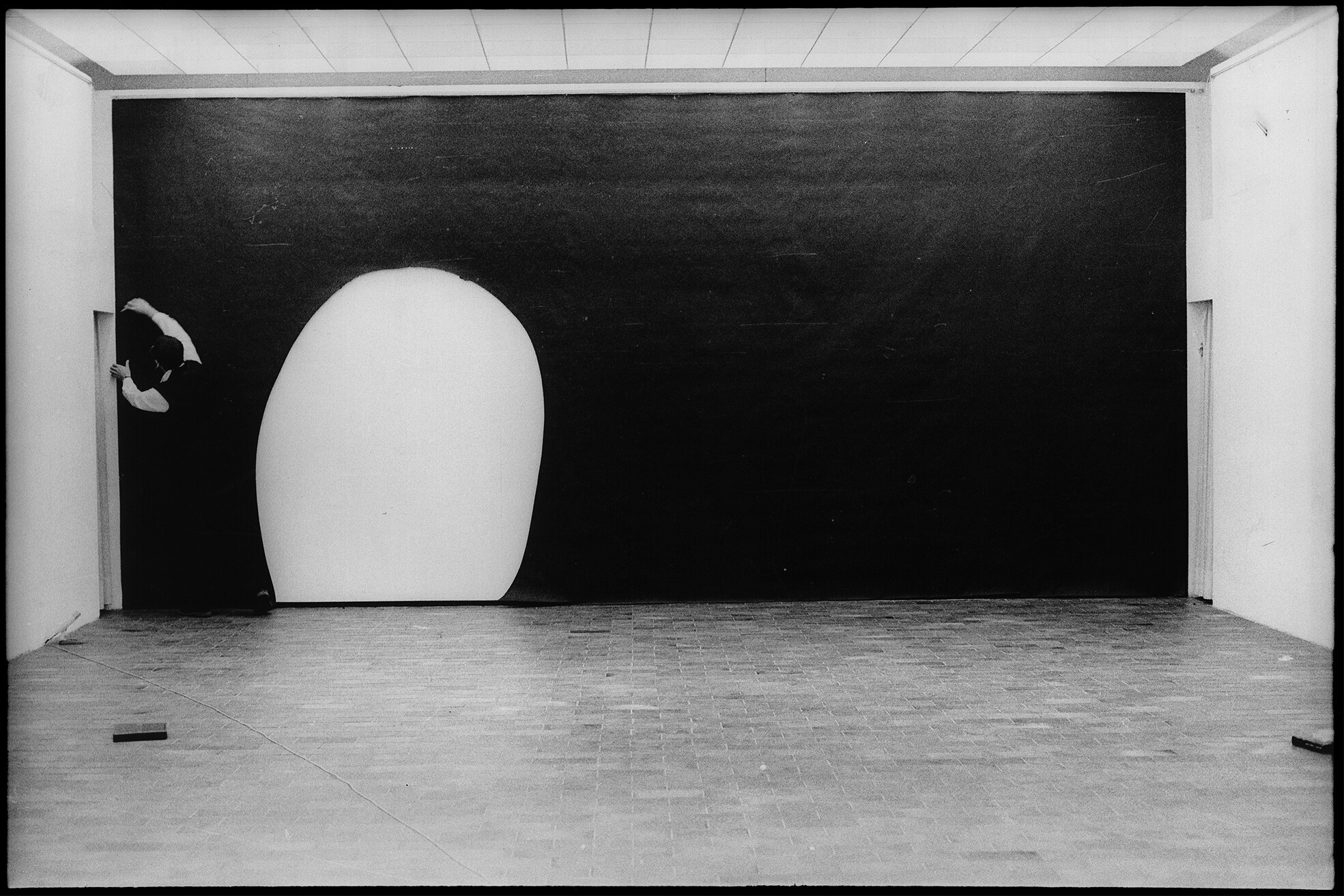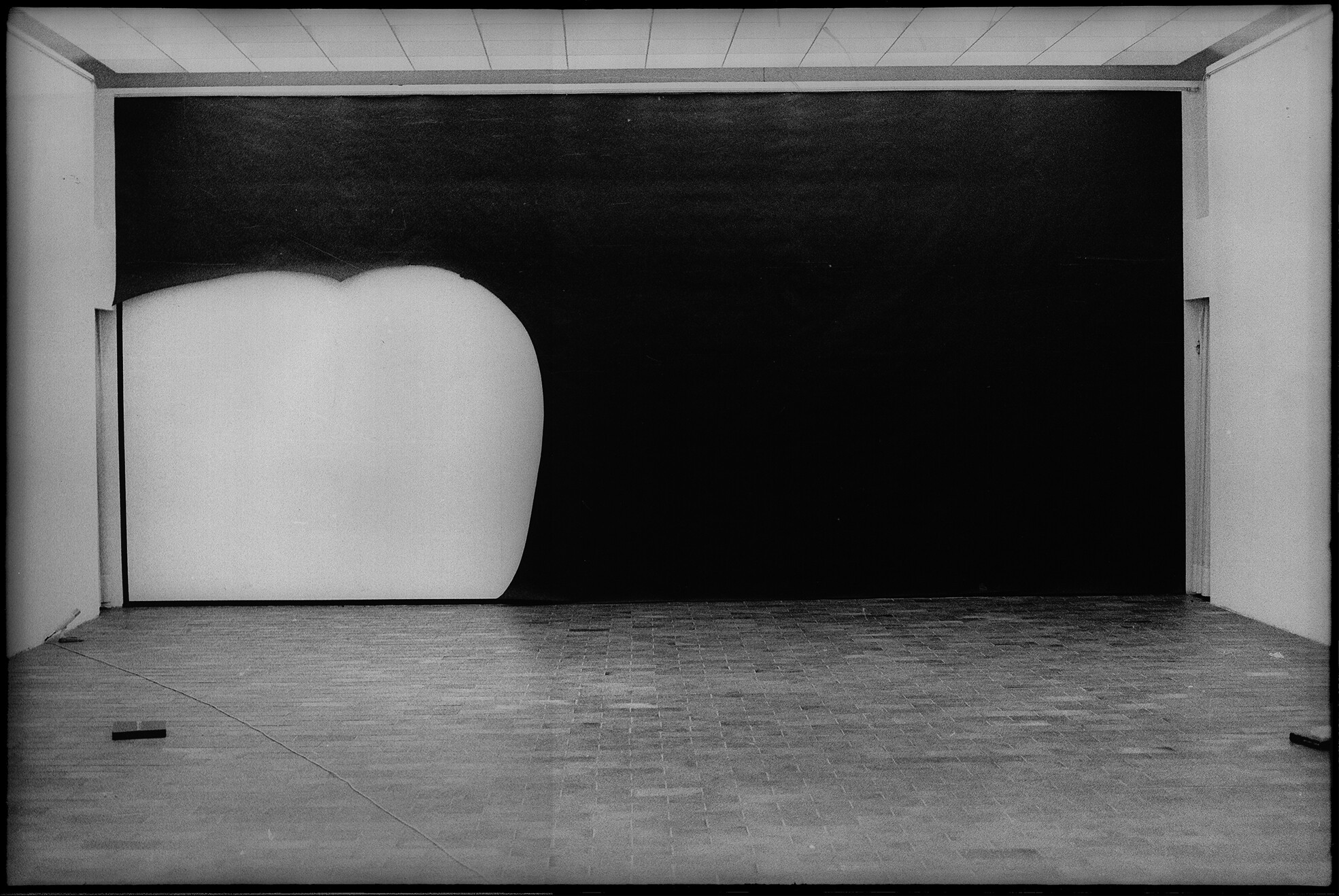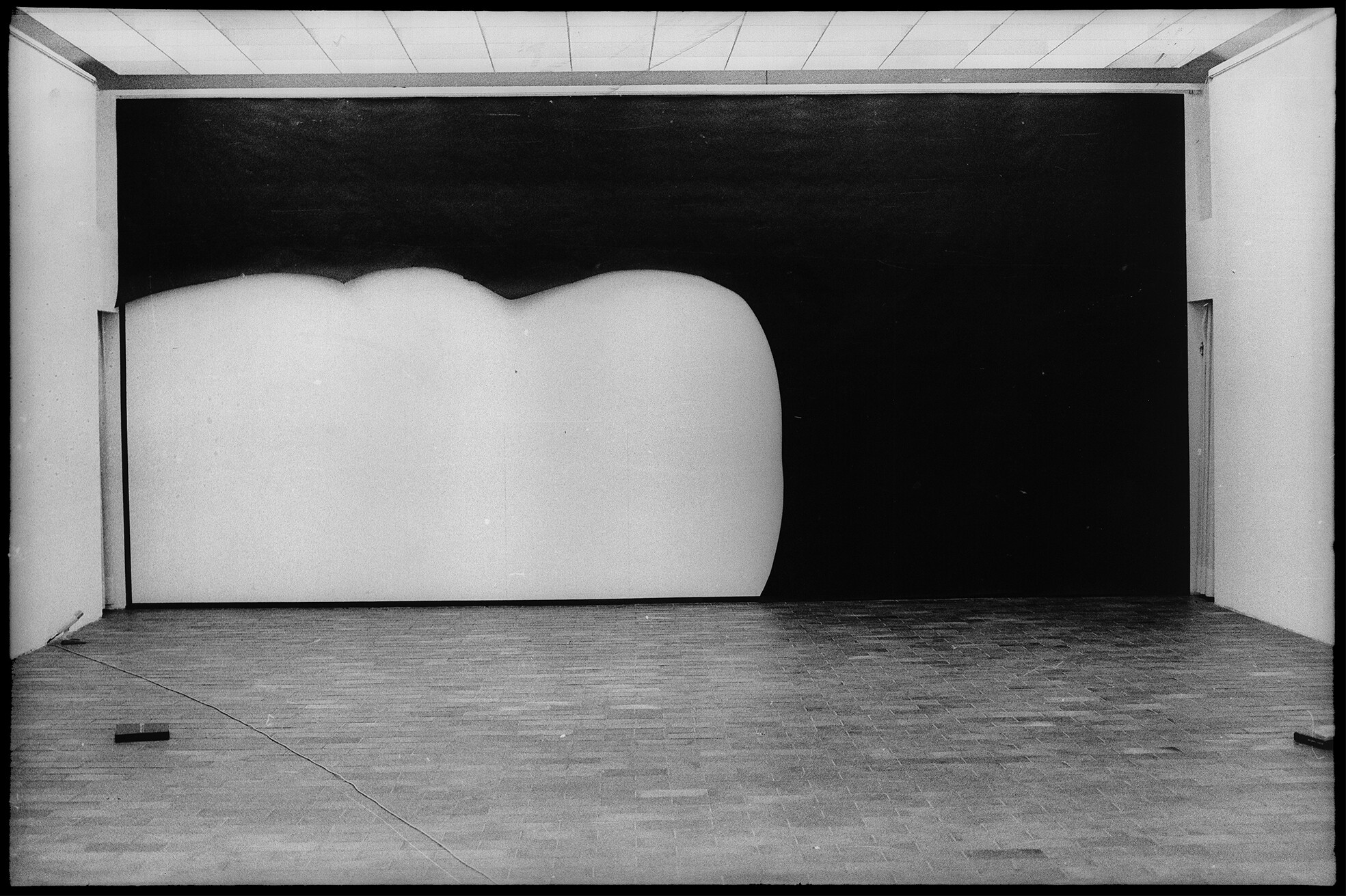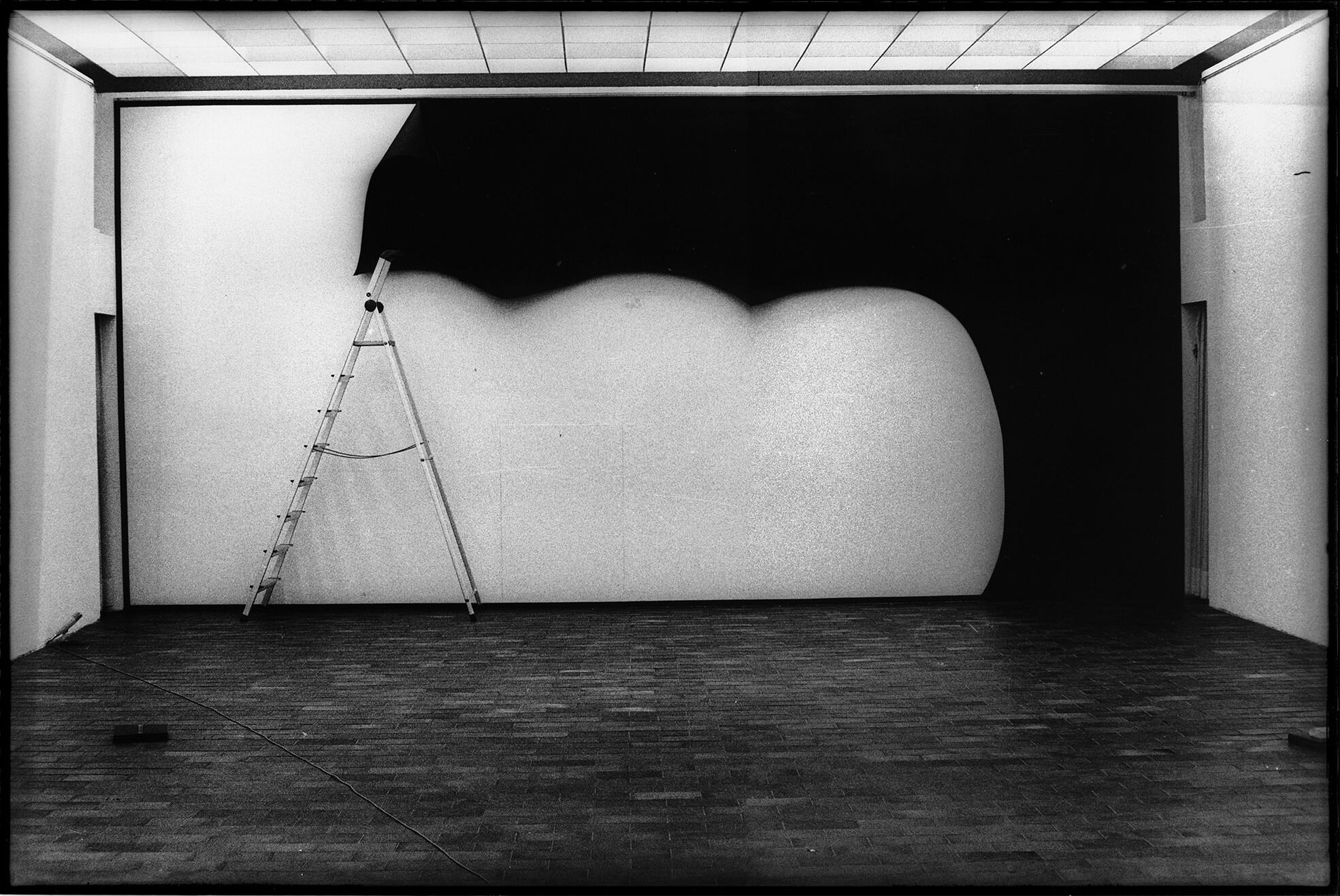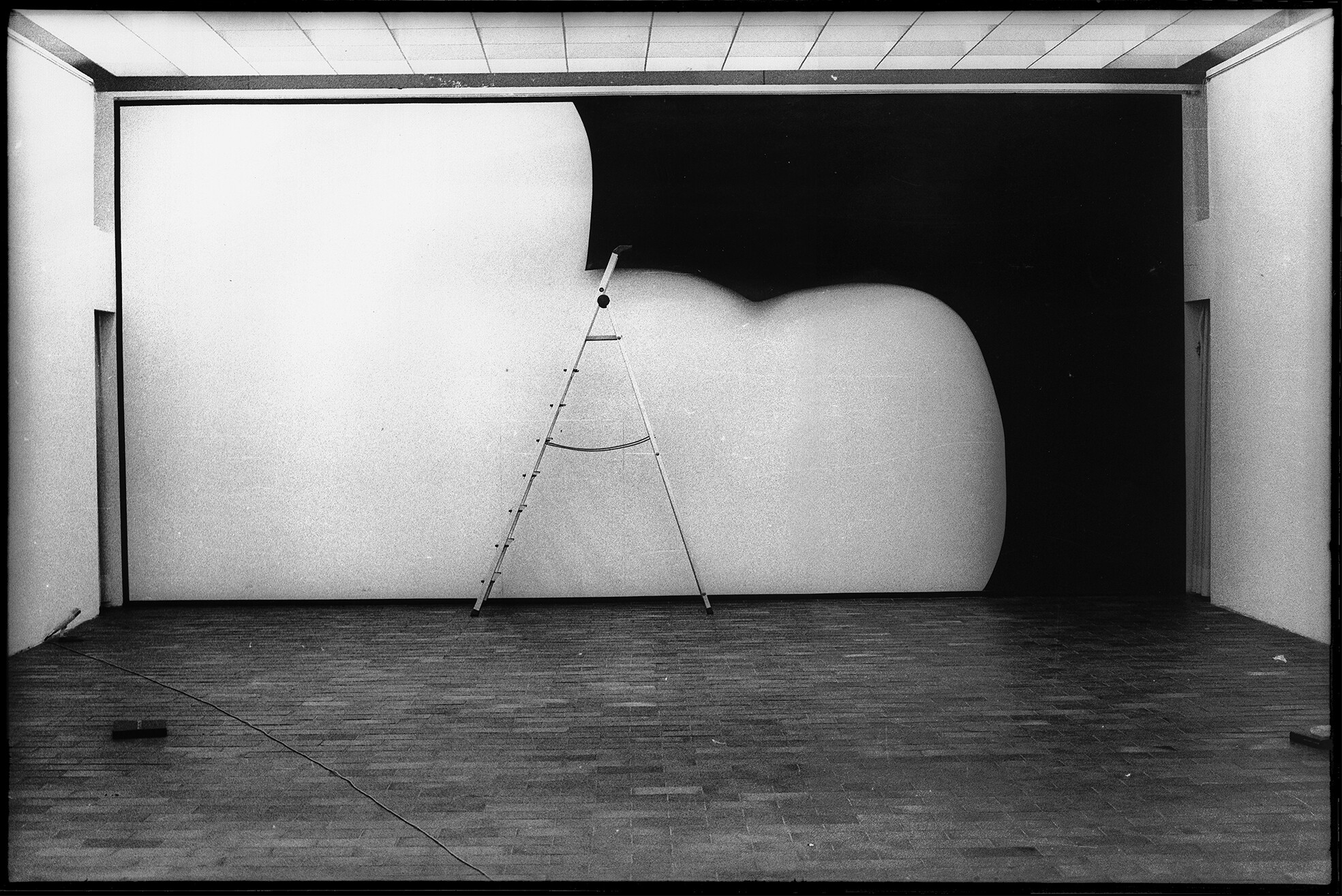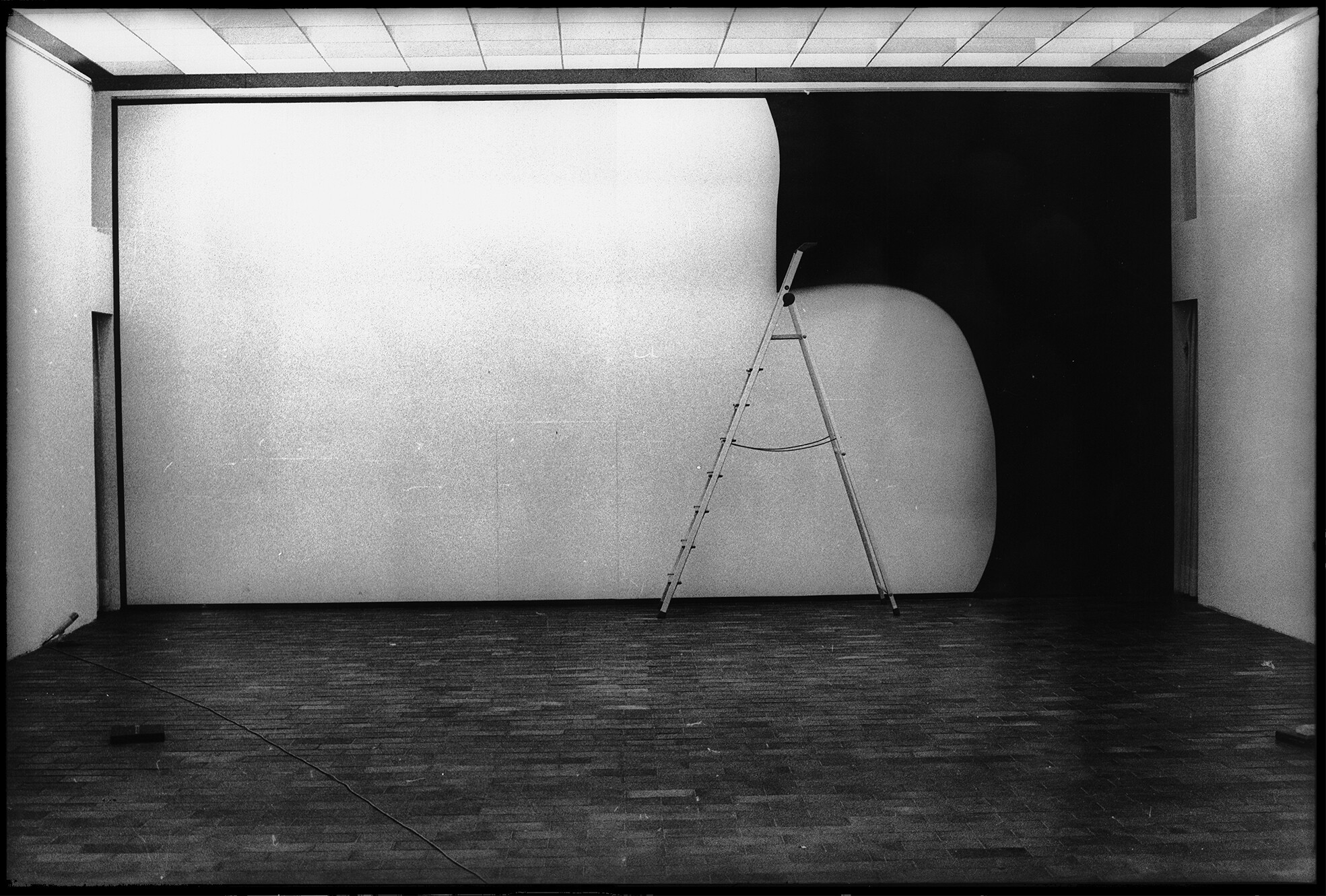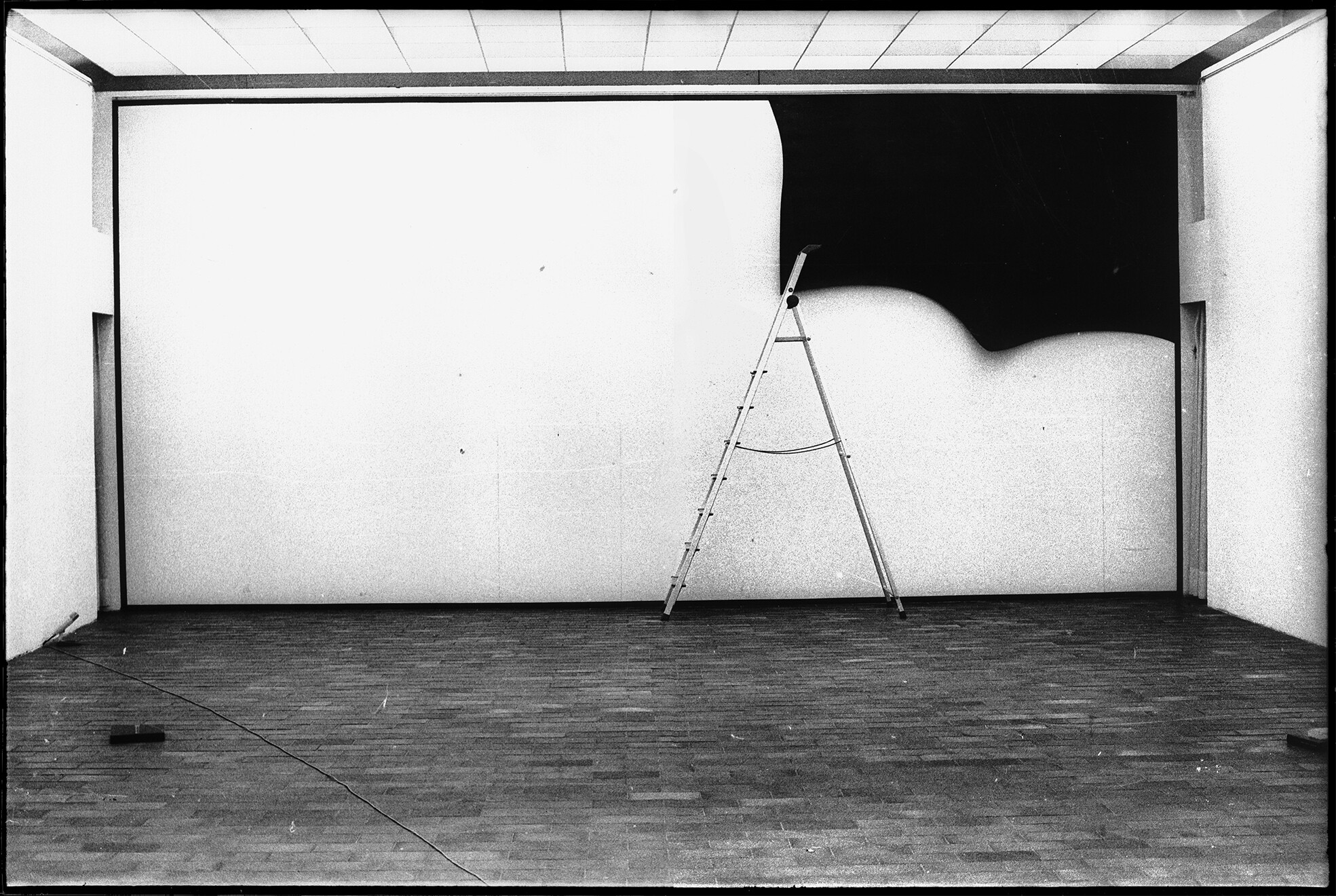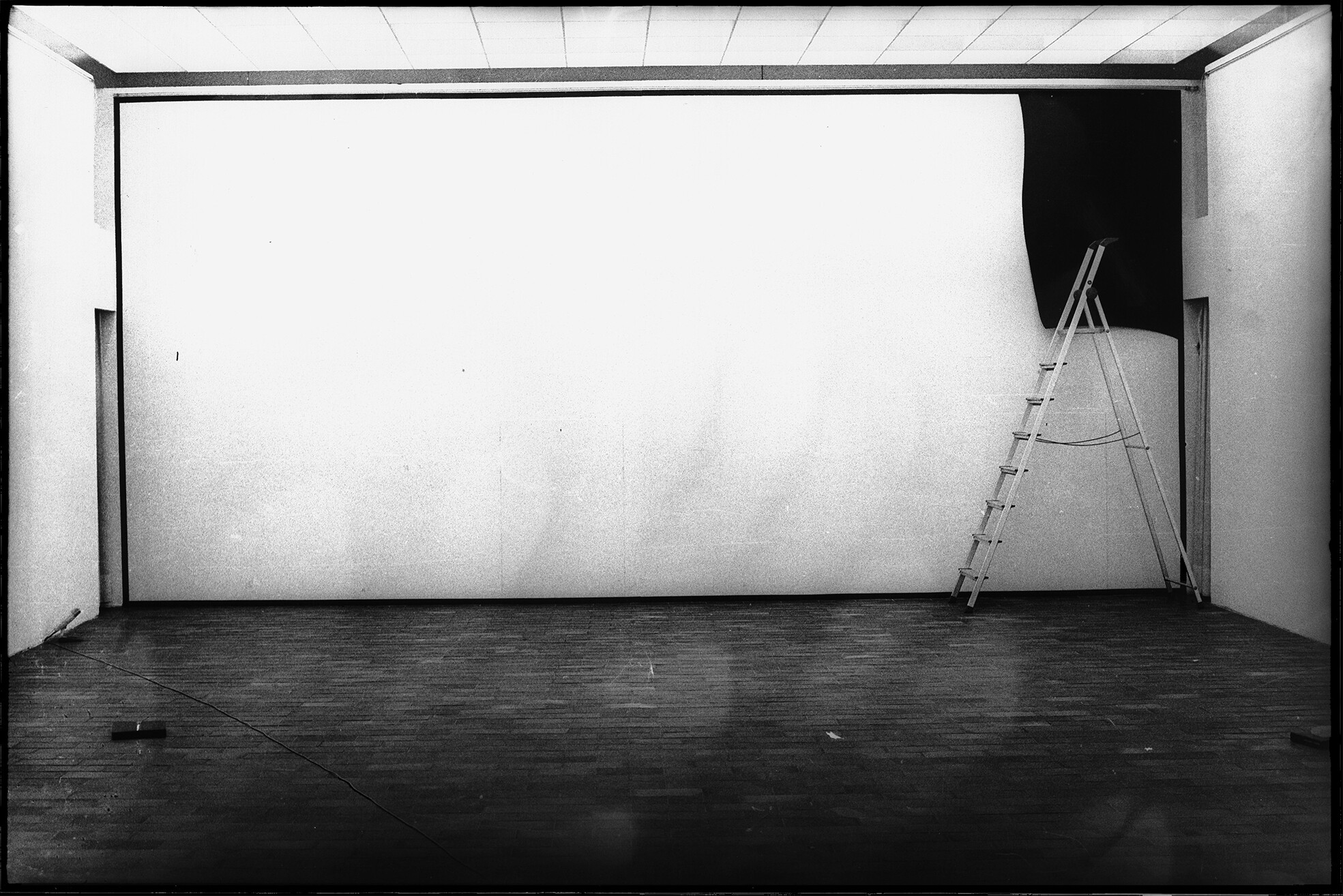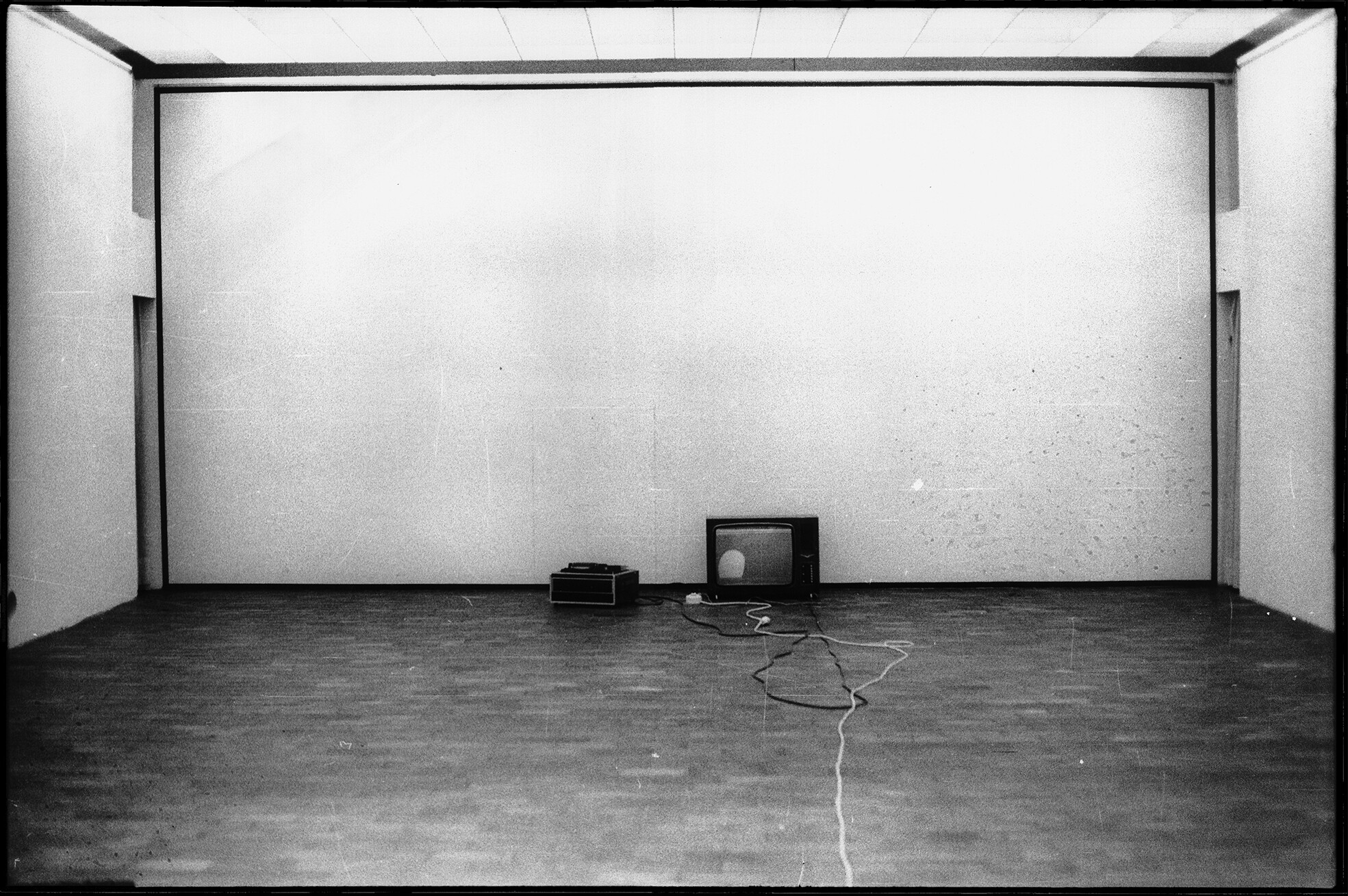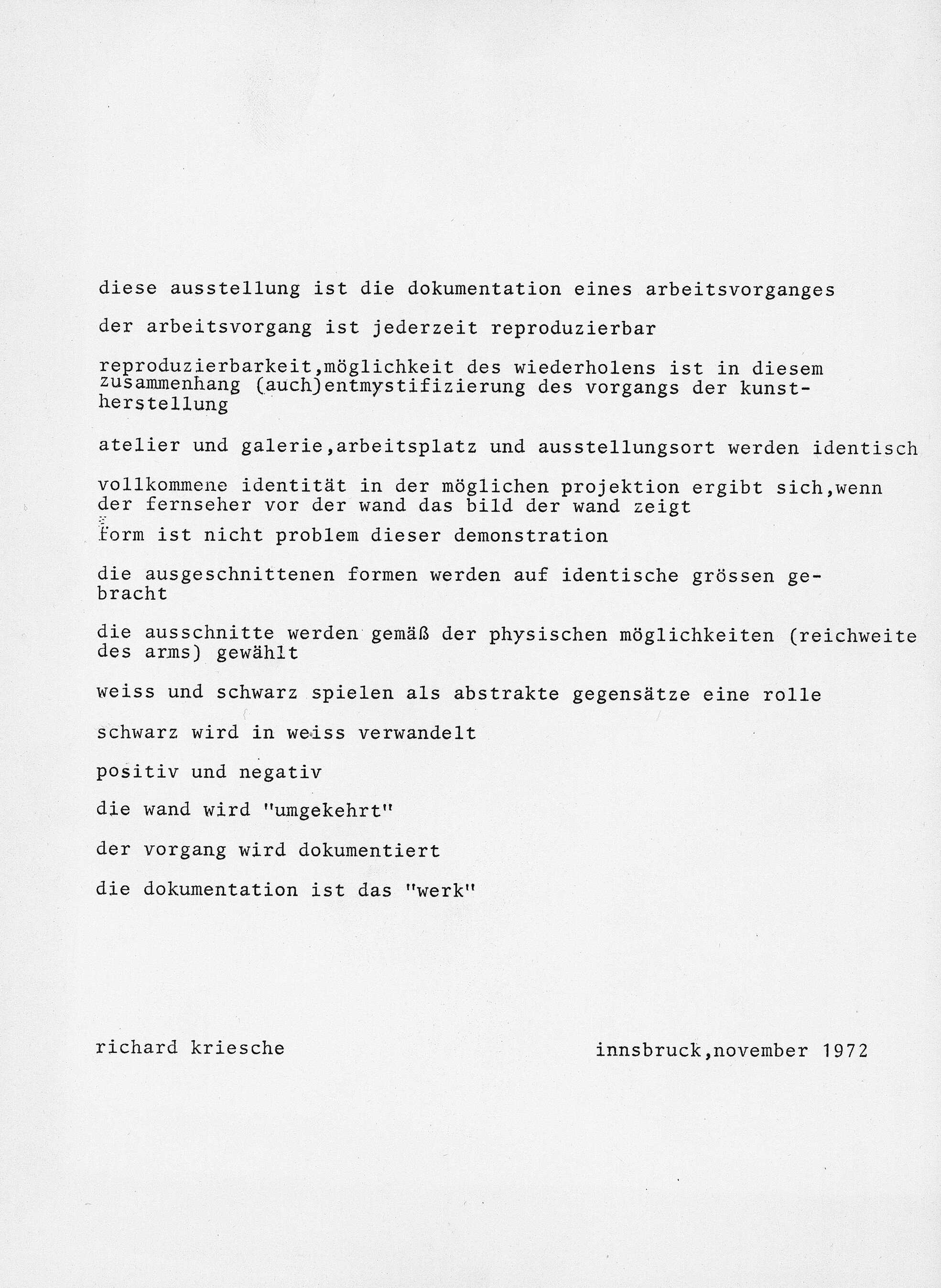MEDIENBLOCK_RICHARD_KRIESCHE
PROJEKT16
kunst ist erstellen von kunst
projekt16
kunst ist erstellen von kunst (videodemonstration 1) 1972
innsbruck galerie im taxispalais
die stirnwand der galerie im taxispalais in innsbruck wurde mit einem schwarzen rahmen versehen und dessen einschließende fläche mit schwarzem papier bespannt. der künstler schnitt entsprechend seiner physischen möglichkeiten papierteile aus und faltete sie auf identische quadratische größen, bis die wand wieder ihr ursprüngliches weißes aussehen mit schwarzem rahmen erlangte. eine videokamera zeichnete diese aktion auf. ein monitor vor dieser wand zeigte die aktion des wandels von schwarzer zu weißer wand.
bemerkenswert ist nicht nur, dass es sich hierbei um eine der ersten ausschließlich videobasierten installationen in österreich handelte, wesentlich war vor allem die inhaltliche ebene – der künstler hat den künstlerischen arbeitsprozess zur ausstellung gebracht. man konnte noch relikte der malerei-, wie „leinwand“ (schwarze papierfläche/weiße wandfläche) und „rahmen“(schwarz bemalter rahmen) vorfinden, das eigentliche kunstwerk hat die malfläche verlassen und sich in den elektronischen raum erweitert. die permanente reproduzierbarkeit der „kunsterstellung“ entmystifizierte den arbeitsvorgang des künstlers. arbeitsplatz und ausstellungsort waren identisch. über den bildschirm, als binäres system aus schwarz und weiß, transformierte der künstler eine absorbierende fläche in eine reflektierende fläche – das unsichtbare wurde sichtbar gemacht.
project16
kunst ist erstellen von kunst (videodemonstration 1) 1972
innsbruck galerie im taxispalais
the end wall of the galerie im taxispalais in innsbruck was fitted with a black frame whose surface was covered with black paper. according to what was physically possible for him, the artist cut out sections of paper and folded them into squares of identical size, until the wall was once again its original white with a black frame. a video camera recorded the action. a monitor in front of the wall showed the action of the shift from black to white.
this is one of the first exclusively video-based installations in austria – yet more remarkable is the level of content – the artist has brought the artistic process into the exhibition. one could still find vestiges of painting, such as the “canvas” (black paper surface/white wall surface) and “frame” (painted black frame), the actual artwork has left the painted surface and expanded into electronic space. the constant reproducibility of “artistic creation” demystified the artist’s work process. work space and exhibition site were one and the same. above the screen, as a binary system of black and white, the artist transformed an absorbent surface into a reflecting surface – the invisible was made visible.

